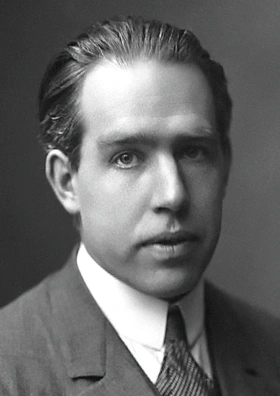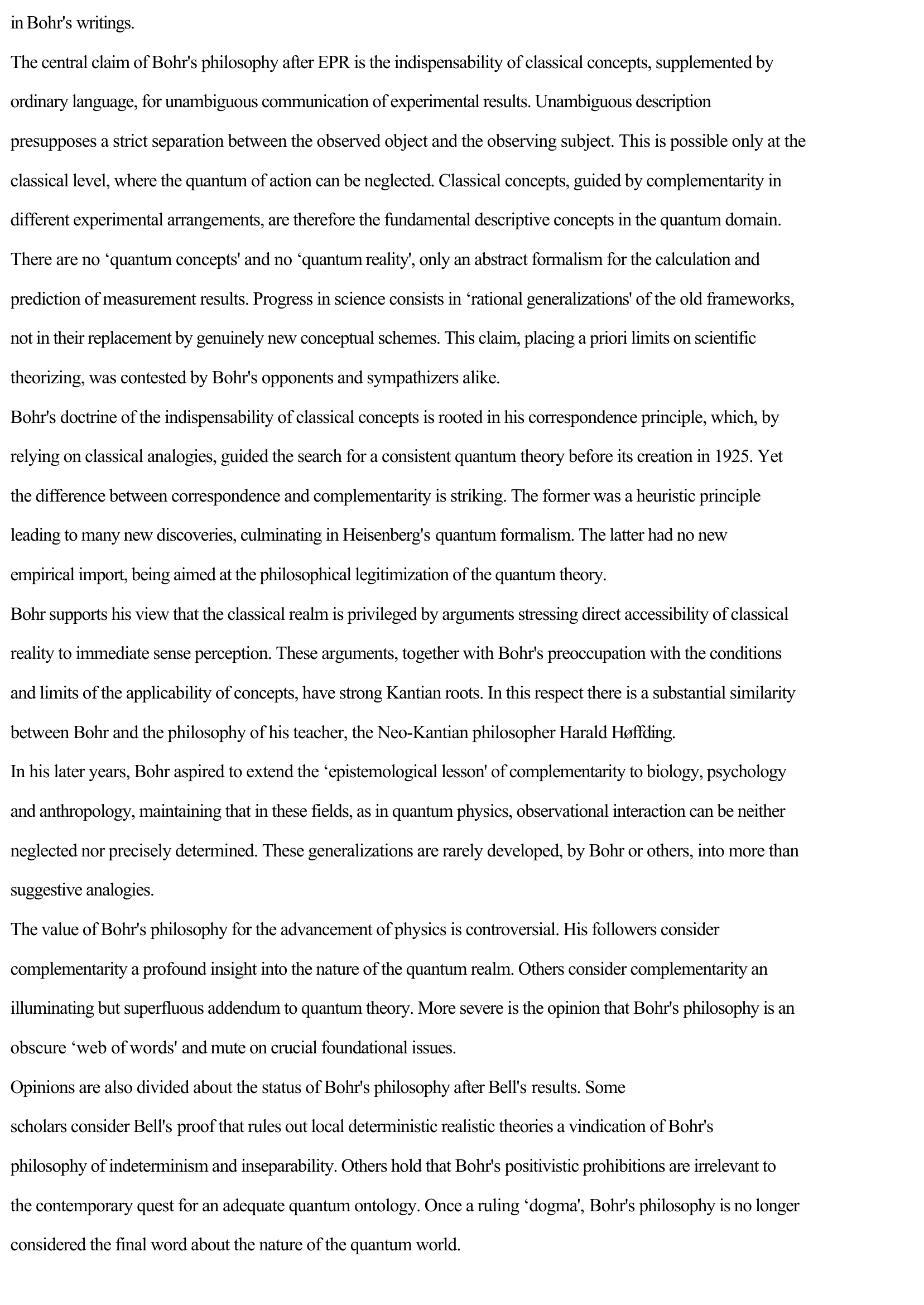Bohr, Niels
Publié le 22/02/2012

Extrait du document


«
in Bohr's writings.
The central claim of Bohr's philosophy after EPR is the indispensability of classical concepts, supplemented by
ordinary language, for unambiguous communication of experimental results.
Unambiguous description
presupposes a strict separation between the observed object and the observing subject.
This is possible only at the
classical level, where the quantum of action can be neglected.
Classical concepts, guided by complementarity in
different experimental arrangements, are therefore the fundamental descriptive concepts in the quantum domain.
There are no ‘quantum concepts' and no ‘quantum reality' , only an abstract formalism for the calculation and
prediction of measurement results.
Progress in science consists in ‘rational generalizations' of the old frameworks,
not in their replacement by genuinely new conceptual schemes.
This claim, placing a priori limits on scientific
theorizing, was contested by Bohr's opponents and sympathizers alike.
Bohr's doctrine of the indispensability of classical concepts is rooted in his correspondence principle, which, by
relying on classical analogies, guided the search for a consistent quantum theory before its creation in 1925.
Yet
the difference between correspondence and complementarity is striking.
The former was a heuristic principle
leading to many new discoveries, culminating in Heisenberg 's quantum formalism.
The latter had no new
empirical import, being aimed at the philosophical legitimization of the quantum theory.
Bohr supports his view that the classical realm is privileged by arguments stressing direct accessibility of classical
reality to immediate sense perception.
These arguments, together with Bohr's preoccupation with the conditions
and limits of the applicability of concepts, have strong Kantian roots.
In this respect there is a substantial similarity
between Bohr and the philosophy of his teacher, the Neo-Kantian philosopher Harald Høffding .
In his later years, Bohr aspired to extend the ‘epistemological lesson' of complementarity to biology, psychology
and anthropology, maintaining that in these fields, as in quantum physics, observational interaction can be neither
neglected nor precisely determined.
These generalizations are rarely developed, by Bohr or others, into more than
suggestive analogies.
The value of Bohr's philosophy for the advancement of physics is controversial.
His followers consider
complementarity a profound insight into the nature of the quantum realm.
Others consider complementarity an
illuminating but superfluous addendum to quantum theory.
More severe is the opinion that Bohr's philosophy is an
obscure ‘web of words' and mute on crucial foundational issues.
Opinions are also divided about the status of Bohr's philosophy after Bell 's results.
Some
scholars consider Bell 's proof that rules out local deterministic realistic theories a vindication of Bohr's
philosophy of indeterminism and inseparability.
Others hold that Bohr's positivistic prohibitions are irrelevant to
the contemporary quest for an adequate quantum ontology.
Once a ruling ‘dogma' , Bohr's philosophy is no longer
considered the final word about the nature of the quantum world..
»
↓↓↓ APERÇU DU DOCUMENT ↓↓↓
Liens utiles
- Niels Bohr: Physique atomique et Connaissance humaine
- Niels Bohr par J.
- Niels Bohr - ciencia y tecnologia.
- Niels Bohr - Forscher & Erfinder.
- Bohr Niels, 1885-1962, né à Copenhague, physicien danois, lauréat du prix Nobel en 1922.

































